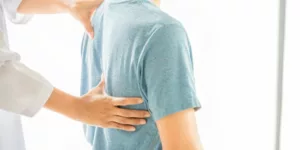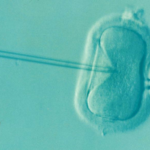Scoliosis is a medical condition where the spine curves sideways into an “s” or “c” shape. Mild scoliosis does not cause significant problems, but if the condition is severe, this can affect breathing and motion. A physician can only diagnose this condition after examining x-ray results to see if the suspected damage is ten degrees. You can find a qualified physician to diagnose scoliosis in Las Vegas and start the treatment process.
Structural vs. Functional Scoliosis
There are two broad categories of this condition depending on the extent of the damage. If the curve is fixed, the condition is termed structural scoliosis, and if the spine is normal, the condition is referred to as functional scoliosis.
Structural scoliosis affects the spine’s shape, and the damage is permanent unless the patient undergoes spine treatment. There is no spinal rotation with functional scoliosis, and therefore, it is reversible. There are many variations to structural scoliosis, as explained below:
Congenital Scoliosis
Scoliosis can affect a human as early as infancy when there is an irregular curvature of the spine. Malformations in the vertebrae are another cause, and they can start in vitro, causing the spinal column to bend. Due to the delicate nature of the condition, congenital scoliosis requires surgical intervention.
Adolescent Idiopathic Scoliosis (AIS)
AIS is the most prevalent kind of scoliosis, so much so that four out of every one hundred children between 10 and 18 years have it. Spinal growth increases significantly when a child reaches ten years, and the process continues during growth spurts in adolescents. Hormonal fluctuations over the years are responsible for the asymmetrical growth of the spine, which is not always noticeable. In some cases, this problem can cause uneven shoulders or a leaning torso, but it doesn’t have to be painful.
Neuromuscular Scoliosis
This form of scoliosis is common in people who cannot walk because of an existing neuromuscular condition. They could have muscular dystrophy, a group of diseases that lead to loss of muscle mass and general body weakness. Patients usually have irregular genes that inhibit the production of proteins that grow healthy muscle.
Degenerative Scoliosis
This form of scoliosis occurs when the spine develops a sideways curvature throughout adulthood. This condition is attributed to joints and discs degenerating as one ages, causing wear and tear that is not uniform. If this process carries on without intervention, the result is spinal curvature on one side.
Signs of Scoliosis
Scoliosis affects different age groups, and it is vital to understand what symptoms to watch out for should the condition develop. Experiencing nagging pain in the back, neck, and shoulders is a major sign to watch out for, especially in teens. Sometimes the bend tightens the stomach and interferes with normal bowel movement. In extreme cases, an adult may find mobility difficult when twisting the torso and experience breathing complications.
Scoliosis can affect individuals of any age, and it even starts in the womb. There are many interventions available to stop this curvature from interfering with general body health. If you or your child is experiencing the symptoms mentioned above, it is prudent to see your physician.
Written by Jake Gibson








